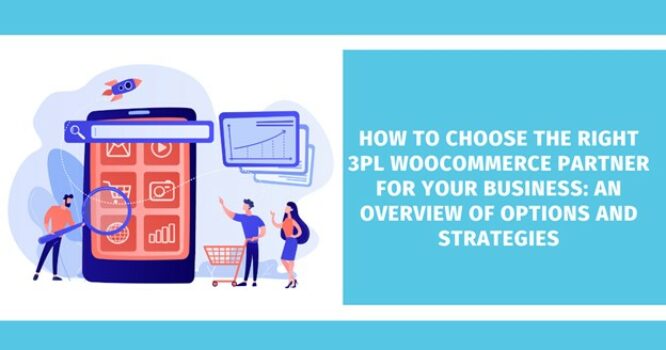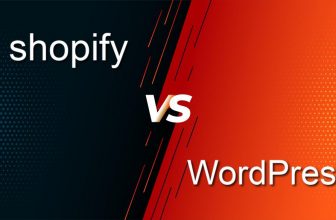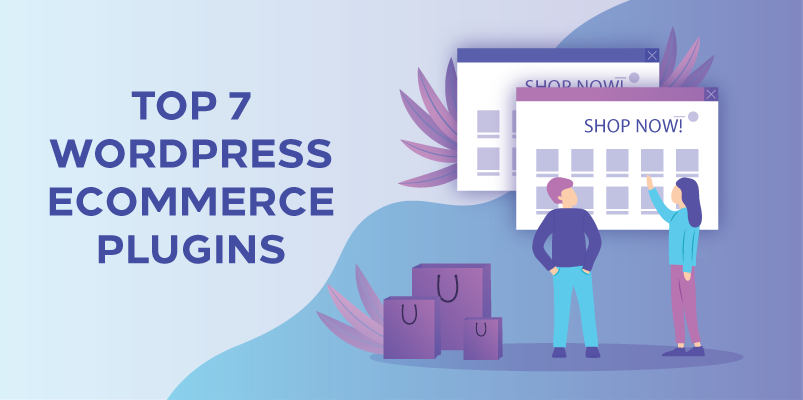Are you tired of dealing with the hassle and headaches of managing your own e-commerce logistics? You're not alone. In fact, a recent study found that over 64% of small business owners need help fulfilling orders and shipping products on time. But don't worry, there's a solution.
By partnering with the right 3PL (third-party logistics) provider for your WooCommerce store, you can streamline your operations and focus on growing your business. This article will look at the different options and strategies for choosing the perfect 3PL partner for your business.
Ready to streamline your e-commerce logistics and focus on growing your business?
Keep reading to learn about the different options and strategies for choosing the right 3PL partner for your WooCommerce store.
What is a 3PL WooCommerce Partner?

3PL means third-party logistics, while WooCommerce is one of the widely used eCommerce plugins on WordPress.
A 3PL WooCommerce partner is a third-party logistics provider specializing in managing and fulfilling e-commerce orders. This includes picking, packing, and shipping products to provide customer service for those orders. By outsourcing these services to a 3PL WooCommerce partner, businesses can free up their time and resources to focus on other essential aspects of running their online store.
3PL partners also provide valuable insights into e-commerce, helping businesses optimize their operations and increase sales. In short, they are an invaluable asset to any company looking to grow its online presence.
Significance of 3PL WooCommerce Partner
The significance of a 3PL partner for e-commerce businesses can't be overstated.
It allows companies to outsource logistics tasks such as warehousing, order fulfillment, and shipping so they can focus on their core operations. This can reduce the time and resources that would otherwise be spent on logistics, allowing businesses to grow and scale. It can also improve efficiency and accuracy in order fulfillment, leading to increased customer satisfaction and, ultimately, more sales.
Real-life Example
A small online clothing store is a real-life example of a business that benefited from a 3PL partner. The business owner was spending a significant amount of time and resources on order fulfillment and shipping, which was taking away their ability to focus on growing the business. By partnering with a 3PL provider, the business owner could outsource the logistics tasks and focus on expanding their product line and increasing their marketing efforts. As a result, the business saw a significant increase in sales and expanded to multiple locations.
In the case of a 3PL WooCommerce partner, it would provide a business using the platform with logistics support tailored to their needs. This would include integration with the platform, specialized shipping and fulfillment services optimized for WooCommerce stores, and other features tailored to e-commerce businesses' needs. This can help to improve efficiency and accuracy in order fulfillment, leading to increased customer satisfaction and, ultimately, more sales.
Types of 3PL WooCommerce Partners and Services

When choosing a 3PL partner for your WooCommerce business, it's essential to understand the different types of providers and services available. Each provider has strengths and areas of expertise, so choosing one that aligns with your business's needs and goals is vital.
● Full-Service Warehousing and Fulfillment Services
Full-service warehousing and fulfillment services are a type of 3PL provider that offers a wide range of services, including storage, inventory management, order fulfillment, and shipping. These providers are a one-stop shop for all your logistics needs. They can handle everything from receiving and storing your products to picking, packing, and shipping your orders.
Significance
The significance of full-service warehousing and fulfillment services lies in allowing businesses to outsource their logistics tasks, so they can focus on their core operations. This can reduce the time and resources that would otherwise be spent on logistics, allowing businesses to grow and scale. It can also improve efficiency and accuracy in order fulfillment, leading to increased customer satisfaction and, ultimately, more sales.
Real-life Example
A real-life example of a business that has benefited from full-service warehousing and fulfillment services is a medium-sized e-commerce company that sells outdoor gear and equipment. The company had outgrown its previous warehouse and fulfillment setup and was looking for a more efficient way to handle logistics. They partnered with a full-service warehousing and fulfillment provider that offered a wide range of services, including storage, inventory management, order fulfillment, and shipping.
The provider had large warehouses with advanced technology that allowed them to process orders quickly and accurately. They also integrated with the company's e-commerce platform, allowing for seamless order processing and inventory management. This helped to improve the company's efficiency and accuracy in order fulfillment, leading to increased customer satisfaction and, ultimately, more sales.
How it differs from other types
Full-service warehousing and fulfillment services differ from other 3PL providers in that it offers a broader range of services, from warehousing to order fulfillment and shipping, in a single package. This is different from drop-shipping providers, which only ship products on behalf of the business, and specialized services providers, which offer specific services such as packaging and assembly, returns management, or freight forwarding.
Hybrid services providers also differ from full-service warehousing and fulfillment providers as they provide a combination of services such as warehousing, fulfillment, and drop-shipping.
● Cross-Docking Warehousing Services
Cross-docking warehousing services are a type of 3PL provider specializing in moving products from inbound to outbound transportation with minimal storage time. This warehousing service is designed to streamline logistics and reduce the time and costs associated with traditional warehousing.
Significance
Cross-docking warehousing services' significance is that they allow businesses to reduce the time and costs associated with traditional warehousing. By eliminating the need for long-term storage, cross-docking services can help to improve supply chain efficiency and reduce inventory costs. It also allows businesses to respond quickly to changes in demand, making it easier to manage inventory levels and keep products in stock.
Real-life Example
A real-life example of a business that has benefited from cross-docking warehousing services is a medium-sized online retailer that sells seasonal products. The company needed help managing inventory and keeping products in stock. They partnered with a cross-docking warehousing provider specializing in moving products from inbound to outbound transportation with minimal storage time. This allowed the company to respond quickly to changes in demand and improve supply chain efficiency. As a result, the company was able to keep products in stock and improve customer satisfaction.
How it differs from other types
Cross-docking warehousing services differ from other 3PL providers because they focus on moving products from inbound to outbound transportation with minimal storage time. On the other hand, full-service warehousing and fulfillment services offer a more comprehensive range of services, including storage, inventory management, and order fulfillment. Drop-shipping services work by holding a stock of products and shipping them directly to customers on behalf of the business. Specialized services providers offer specific services such as packaging and assembly, returns management, or freight forwarding. Hybrid services providers offer a combination of warehousing, fulfillment, and drop-shipping services.
● Pick and Pack Fulfillment Warehouse Services
Pick and pack fulfillment warehouse services are a type of 3PL provider specializing in handling the process of picking, packing, and shipping orders for e-commerce businesses. These providers typically have warehouses and inventory management systems to quickly and accurately fulfill orders.
Significance
The significance of pick-and-pack fulfillment warehouse services lies in allowing businesses to outsource the time-consuming task of order fulfillment and shipping to focus on their core operations. This can reduce the time and resources that would otherwise be spent on logistics, allowing businesses to grow and scale. It can also improve efficiency and accuracy in order fulfillment, leading to increased customer satisfaction and, ultimately, more sales.
Real-life Example
A small online store that sells beauty products is a real-life example of a business that has benefited from pick-and-pack fulfillment warehouse services. The store was experiencing a high volume of orders and needed a more efficient way to handle logistics.
They partnered with a pick-and-pack fulfillment warehouse provider that dealt with all aspects of order fulfillment and shipping. The provider had a warehouse with advanced technology that allowed them to process orders quickly and accurately. The provider also integrated with the store's e-commerce platform, enabling seamless order processing and inventory management.
How it differs from other types
Pick-and-pack fulfillment warehouse services differ from other types of 3PL providers, such as full-service warehousing and fulfillment services, focusing on picking, packing, and shipping orders. On the other hand, full-service warehousing and fulfillment services offer a more comprehensive range of services, including storage, inventory management, and order fulfillment.
How to Choose the Right 3PL WooCommerce Partner for Your Business

Choosing the right 3PL partner for your WooCommerce business can be challenging, but it can be done with the right approach. Here is a step-by-step guide on how to choose the right 3PL WooCommerce partner for your business:
Step 1: Assess Your Business Needs
The first step in choosing a 3PL partner is to assess your business needs. This involves identifying the specific logistics tasks you need to outsource and the regular volume of orders you process. This will help you to determine which type of 3PL provider is the best fit for your business, whether it's full-service warehousing and fulfillment, drop-shipping, specialized services, or a hybrid provider.
How to Assess Your Business Needs
- Identify your specific logistics tasks that need to be outsourced.
- Determine the volume of orders your business processes regularly.
- Identify any particular requirements such as inventory management, shipping, returns management, etc.
- Assess the capacity of your current infrastructure to handle logistics tasks in-house.
Step 2: Research Potential Providers
Once you have assessed your business needs, the next step is to research potential providers. This involves looking at the different types of 3PL providers that are available and evaluating their services and capabilities.
How to Research Potential Providers
- Research different types of 3PL providers and their services.
- Look at the provider's website and check their service offerings and capabilities.
- Read customer reviews and testimonials to understand the provider's reputation.
- Ask for references from the provider and reach out to their clients to ask about their experience.
Step 3: Evaluate Integration and Technology
Regarding WooCommerce, finding a 3PL partner that can integrate with the platform, allowing for seamless order processing and inventory management, is essential. Therefore, evaluating the integration and technology of the potential provider is crucial.
How to Evaluate Integration and Technology
- Check if the provider's technology is compatible with your e-commerce platform
- Look for providers that offer real-time inventory tracking and order management.
- Check if the provider provides automated shipping and tracking capabilities.
- Evaluate their ability to scale and handle large volumes of orders.
Step 4: Evaluate Pricing and Contract Terms
Once you have narrowed down your list of potential providers, the next step is to evaluate pricing and contract terms. This includes looking at the provider's pricing structure, as well as the terms and conditions of the contract.
How to Evaluate Pricing and Contract Terms
- Compare pricing structures and services offered by different providers.
- Read the contract terms and conditions carefully, paying attention to hidden fees or charges.
- Check if the provider provides flexible pricing and contract options.
- Check if the provider has a termination clause and understand its conditions.
Step 5: Schedule a Test Run
Before committing to a 3PL provider, it's a good idea to schedule a test run to see how the provider's services perform in real-world scenarios. This will allow you to evaluate the provider's performance and determine whether they fit your business.
How to Schedule a Test Run
- Contact the provider and schedule a test run of their services
- Provide a small order and evaluate their performance
- Check the quality of their service, accuracy, and speed of order fulfillment
- Evaluate the communication and responsiveness of their customer service team.
- By following these steps and evaluating potential providers, you can choose a 3PL partner that aligns with your business needs and goals and help your business to grow and scale effectively.
Final Questions to Ask Potential Providers Before Making Your Decision

Choosing the right 3PL partner for your WooCommerce business is a big decision, and it's essential to ask the right questions before making your final choice. Here are some final questions to ask potential providers before making your decision. These questions will help you to evaluate the provider's capabilities, performance, and service quality, ensuring that you make the best choice for your business.
1. What are the provider's inventory management capabilities?
Understanding the provider's inventory management capabilities is essential as it will impact the accuracy of order fulfillment and, ultimately, customer satisfaction. Knowing the provider's inventory management capabilities will help you understand if they can handle your inventory and stock levels effectively.
2. What is the provider's order fulfillment accuracy rate?
Order fulfillment accuracy rate is a crucial metric to measure the performance of 3PL providers. Knowing the provider's order fulfillment accuracy rate will help you understand the efficiency of their order fulfillment process and the likelihood of customer complaints or returns.
3. How do they handle returns and reverse logistics?
Returns and reverse logistics can be complicated, and it is vital to understand how the provider takes them. Knowing the provider's process for handling returns will help you understand the level of customer service they provide and the likelihood of customer complaints or issues.
4. What are the provider's shipping capabilities?
Shipping capabilities are an essential aspect to consider when choosing a 3PL provider. Knowing the provider's shipping capabilities will help you understand if they can handle the shipping needs of your business and if they can provide the necessary shipping options to your customers.
5. What is their communication and customer service like?
Communication and customer service are important factors when choosing a 3PL provider. Knowing the provider's communication and customer service capabilities will help you understand if they can provide effective communication and customer service and can help you resolve any issues or concerns that may arise.
Conclusion:
Here are some key takeaways:
- Assessing business needs is the first step in choosing a 3PL partner; it will help you determine which type of 3PL provider is the best fit for your business.
- Researching potential providers involves looking at different types of 3PL providers and evaluating their services and capabilities.
- Evaluating the integration and technology of potential providers is crucial to ensure seamless order processing and inventory management.
- Evaluating pricing and contract terms will help you to understand the costs and commitments associated with the provider.
- Scheduling a test run before committing to a provider will help you evaluate the provider's performance and determine whether they are the right fit for your business.
Now that you better understand how to choose the right 3PL WooCommerce partner for your business, we encourage you to share this guide with your friends and colleagues. By sharing this guide, you can help other companies make an informed decision when choosing a 3PL provider and help them streamline logistics and improve their operations.






